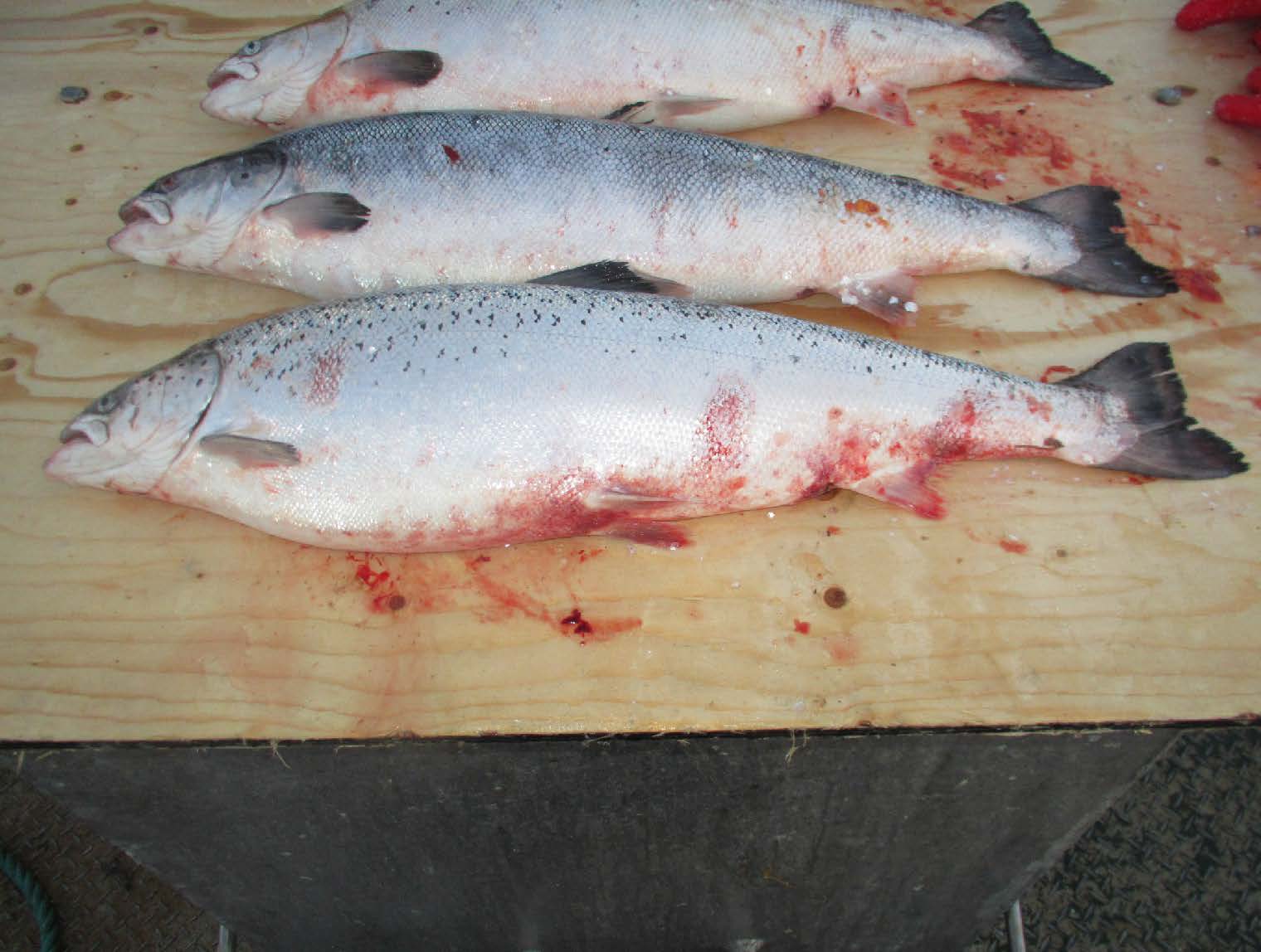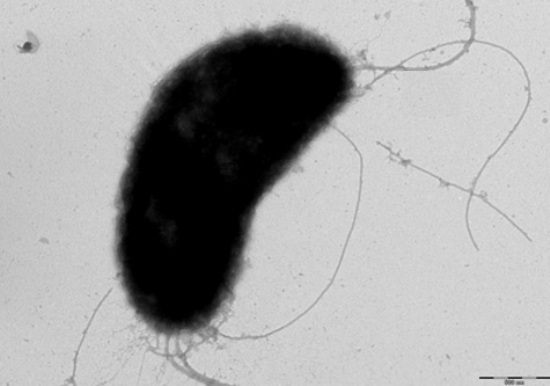Deadly Interactions
Every single organism interacts with other species, whether it is a mutualistic, commensal, parasitic, competitive, or predatory interaction, they have a relationship with another organism. Also an organism can have many different types of relationships, it just depends on the species it is interacting with.As for the bacteria Vibrio salmonicida, we choose to talk about the interaction that is most damaging and interesting, it is a host-pathogen interaction (Bjelland et al. 2012 a). A host-pathogen interaction is very different compared to other interactions. This relationship primarily occurs between a pathogen, such as a bacterium or virus, and an organism. Generally, one organism is severely harmed while the other one has more benefits than costs. Try not to confuse this with parasitic interaction; it is different because of the types of organism involved and the outcome of the relationship. Examples of a parasitic relationship can be found in Anisakis simplex or American Mistletoe.
Vibrio salmonicida's
host-pathogen relationship takes place inside the fish’s organs,
where it cause a
 disease commonly known as Cold-water Vibrosis.
This disease is fatal to the fish. Some fish that are commonly
infected are rainbow trout, Atlantic salmon, Atlantic cod, and other
species found in fish farms in Norway (Farmer III and
Hickman-Brenner, 1991). Interestingly, the disease normally occurs
in winter or early
spring. The infected fish can exhibit many symptoms, including a
decrease in red blood cells, and extended hemorrhages that occur around
the abdomen and in the areas around the internal organs (Bjelland et
al. 2012 a). These symptoms will advance into a severe stage and
eventually take over the fish, resulting in death.
disease commonly known as Cold-water Vibrosis.
This disease is fatal to the fish. Some fish that are commonly
infected are rainbow trout, Atlantic salmon, Atlantic cod, and other
species found in fish farms in Norway (Farmer III and
Hickman-Brenner, 1991). Interestingly, the disease normally occurs
in winter or early
spring. The infected fish can exhibit many symptoms, including a
decrease in red blood cells, and extended hemorrhages that occur around
the abdomen and in the areas around the internal organs (Bjelland et
al. 2012 a). These symptoms will advance into a severe stage and
eventually take over the fish, resulting in death.
Also, Vibrio salmonicida can survive in the water, and like many other marine bacteria, they are able to survive a long time without supplemental nutrition; however, there is some scientific dispute over how long they can survive (Hoff 1989). When the bacteria is living outside of the host, no interactions are occurring. The organism has no means of reproducing and is only “looking” for the next host to infect.The process by which this bacterium survives in the water can be read about in the reproduction section.
When we see a disease that can so
severely affect a fish, many begin to wonder how it can affect humans. Generally, a question of research is if it will cause the
same symptoms in humans as it does in fish. There is some research which states that Vibrio salmonicida
is similar to other human pathogens (Alivibrio salmonicida). Luckily, another study has shown that
Vibrio salmonicida pathologically has no effect on human-beings.
Dispite this, the bacteria can still cause extreme economic problems.
This especially happens in
fish farms, when mass numbers of fish become disease-ridden. When
countries like Norway, produce almost 600,000 tons of farmed salmon
and trout each year; diease can be extremely dangerous to the
finance of a country (Enviromental News).
 When
one fish contracts Cold-water Vibrosis, it can easily spread to the
rest of the fish in the farm. This results in mass mortality at the farms,
which in turn leads to a lack of fish and financial loss. For
example, in 2006 Norway had lost almost 8.5% of the total production
of farmed salmonids; of that, 85% were were lost due death on the
fish farms (Bellona). This is not saying that the fish died from
Cold-Water Vibriosis; however, this deadly diease could have been a
factor. As shown by the 2006 incident when almost 10% of the
population was lost, it could be harmful to the country if the
economy is heavily dependant on the fish farms. There is potenitial
that a large amount of the country's income would be lost, which
would severely affect the well-being of the families that depend on
the fish as income. Not only can it affect people money-wise, but
also in the abundace of food. If the fish has died from a diease,
the fillets should not be eaten. Pictures of
fish fillets infected with Vibrio salmonicida can be seen on the
facts page.
When
one fish contracts Cold-water Vibrosis, it can easily spread to the
rest of the fish in the farm. This results in mass mortality at the farms,
which in turn leads to a lack of fish and financial loss. For
example, in 2006 Norway had lost almost 8.5% of the total production
of farmed salmonids; of that, 85% were were lost due death on the
fish farms (Bellona). This is not saying that the fish died from
Cold-Water Vibriosis; however, this deadly diease could have been a
factor. As shown by the 2006 incident when almost 10% of the
population was lost, it could be harmful to the country if the
economy is heavily dependant on the fish farms. There is potenitial
that a large amount of the country's income would be lost, which
would severely affect the well-being of the families that depend on
the fish as income. Not only can it affect people money-wise, but
also in the abundace of food. If the fish has died from a diease,
the fillets should not be eaten. Pictures of
fish fillets infected with Vibrio salmonicida can be seen on the
facts page.
In order to prevent loss in the future, a large amount of research is being done to produce vaccines in order to save the countries from this financial burden. Overall, Vibrio salmonicidia can have many different realtionships with other organisms; of these interactions many are negative. In the future there may be hope for a solution to this disease, but like many other organism there is always a chance Vibrio salmonicidia may evolve.
Learn more Interesting facts about
Vibrio salmonicida.
